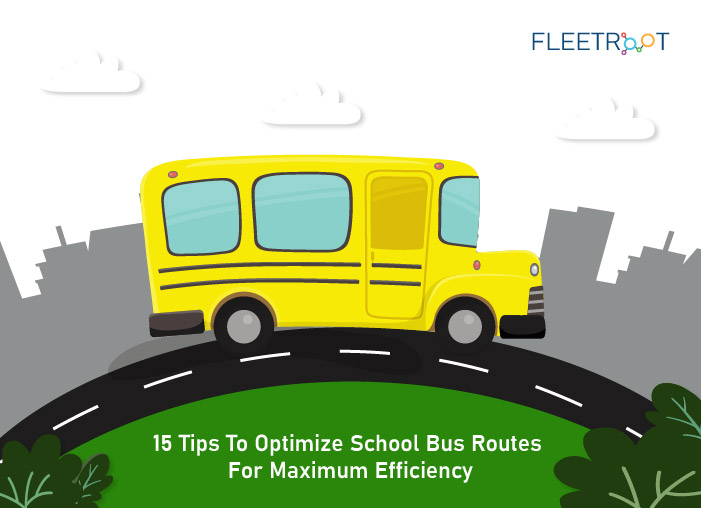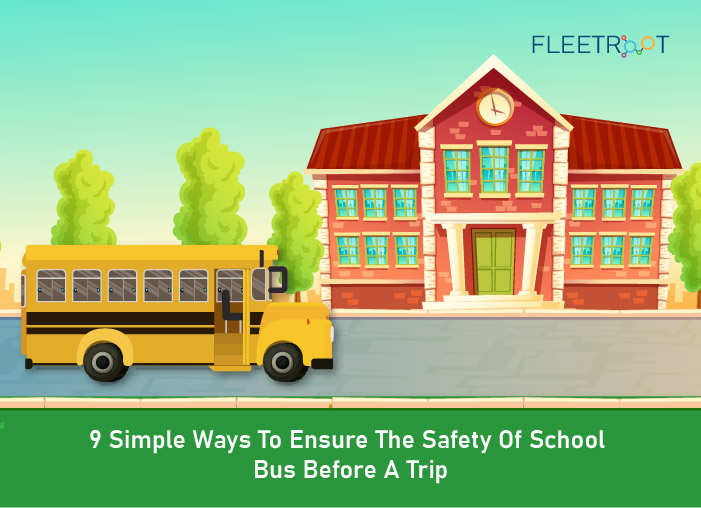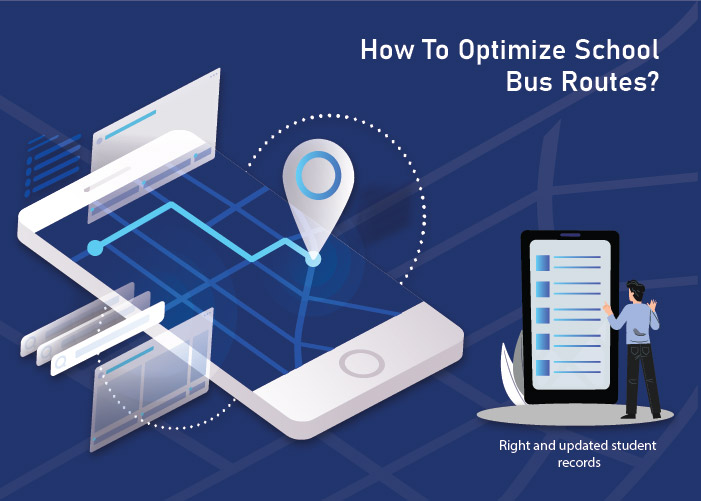Providing safe and timely transportation to students has always been a priority for schools. But given budgetary restrictions, schools have had to look for ways to reduce costs while still maintaining quality service.
Thankfully, school bus GPS tracking system now offer a number of ways to reduce expenses and increase profitability of operations. Foremost among them is automated school bus route optimization.

What is School Bus Route Optimization?
School Bus Route Optimization is an automated process which generates the most efficient / cost effective routes for a given fleet of school buses, simultaneously taking into consideration a multitude of factors. This is made possible by applying the power of Artificial Intelligence to help develop a unique algorithm for the purpose.
Even though route optimization software has hugely simplified the job of transport managers, one can obviously not leave it entirely to computers – human effort as well as discernment is required to make it a success in the real world.
Here are some important tips that will help you make the most of the software and achieve maximum cost efficiency:

1.Take Stock of Transportation Requirements:
Each year, school transport managers need to face changes in the student population and demographics in their district. Students will graduate from one level to the next, new families will take up residence, and some families will move. Expansion in city limits, new roads and residential complexes will also have a direct impact.
It is important that transport managers have a short term as well as a long-term perspective on transportation requirements.
2.Maintain Accurate Records:
Data points are the bedrock of any AI process. Access to accurate information is a critical necessity for automated route optimization, without which the entire process would fail.
a)Student Data: All Student profile data including street address, route and bus stop must be accessible in the system. In addition, medical data, special needs, emergency contacts, custody arrangements and daycare information must also be updated for every student.
b)Driver details: All driver information such as attendance, logged work hours, schedules, trainings, certification status and traffic violations must be stored centrally.
c)Fleet Information: All relevant information such as vehicle type, seating capacity, specialized equipment, age, average mileage etc. must be updated in the system.
3.Communicate Optimization Philosophy:
Implementing optimized routes might inconvenience some families or even require some policy changes by school authorities. Hence, at the very outset, all stakeholders must be taken on board and made to understand that the end goal of the optimization process is to provide safer and more efficient transport for students.
4.Be Responsive to Change:
The system should be responsive to changes required by school authorities from time to time. For this, transport managers must take cognizance of all mandates and policy changes.
E.g., recently many schools in the US revised the timings for middle and high school batches, in response to research that said early school timings compromised sleep and had an adverse impact on over-all health of these students.
5.Reduce the number of stops:
A greater number of bus stops translates to more engine starts and stops for a bus, which leads to fuel wastage. Hence it is always in the interest of school authorities to use the routing software to minimize number of stops.
Of course, the impact on students must be considered: if two or more stops are combined, some students may have to walk some distance to the bus stop, which could be acceptable for high schoolers, but not for elementary students.
6.Minimize Trip Duration:
The system can help to determine the shortest possible route to the school, by choosing a preferred pick up point as a parameter. In this case, some pick up points may have to be dropped from the route.
If the pick-up radius is small but density of stops is more, one could create smaller routes and have vans ply on them. Sometimes, one could save time by changing the order of pick up points in a route.
Thus, the system can come up with multiple ways to achieve a single objective, but choosing the right way requires deliberation and discussion with different stakeholders.
7.Maximize Capacity Utilization:
To increase capacity utilization, we can group schools by route in the system, so that more schools can be catered on the existing routes. It be possible to pair empty buses with nearby schools so that they reduce deadhead costs.
As a result, more seats will be filled, and may even result in reduced number of buses required, which will have a huge impact on productivity, cost savings and operational profitability for the fleet.
8.Be Transparent:
Use the report feature of the software to run reports, look at all possible outcomes and also share the same with school authorities and other stakeholders. Fine tune the parameters and redo the whole process until all concerned are aligned with the changes required.
9.Deploy Buses Wisely:
Some buses may be mandated for certain students -e.g., children with special needs may require buses that have specialized equipment on them.
Also selecting the newest buses for the longest routes may prove to be profitable for the school. All such considerations must be kept in mind while running the software.
10.Manage Road Restrictions:
Priority needs to be given to rerouting around specific road restrictions such as roadblocks, turn restrictions based on bus size, speed limits at various times of the day, and traffic congestions. This will reduce time and fuel wastage and increase fleet efficiency.
11.Prioritize Safety:
At the end of the day, all routing efforts come to naught if the optimized routes are not safe for students. It is important to avoid having pick up points on hazardous areas such as hills, dangerous curves etc. where the visibility of drivers, parents and children is compromised.
Also avoid stops where students have to cross or walk on busy roads without sidewalks.
12.Build Team Flexibility:
In the event of unexpected breakdowns, sudden changes in weather etc., some routes may be left incomplete, and the transport manager may have to direct the nearest bus to cover the same.
At such times, the software will provide guidance in real time, but what will really count here is the seamless communication between driver and manager and a flexible attitude.
13.Monitor Vehicle Performance:
Keep a track of distance covered, fuel consumed, mileage etc. for vehicles on given routes, so that you know what parameters to tweak to get the best results.
14.Pre-empt Breakdowns:
Create schedules and reminders for timely checks on the engine, oil changes and electrical systems, so that breakdowns are avoided, and unexpected repairs / maintenance issues are not a constraint in the optimization process.
15.Monitor Drivers:
Keep a track of unscheduled stops, speeding incidents and route deviations by drivers, evaluate their driving habits and train them when necessary so that skill levels are kept uniform across the drivers, which will help in seamless optimization.
Conclusion
Thus, school bus route optimization is an iterative and interactive process, whose success depends upon painstaking preparation, foresight, flexibility and collaborated efforts by all stakeholders.
In all this, an intelligent school bus tracking system, with automated route optimization – plus real time bus monitoring, alert notifications and inbuilt capabilities for database management, driver monitoring and preventive maintenance will significantly ease your path and prove to be your best ally.
What do you think? Let us know your views by commenting below:



